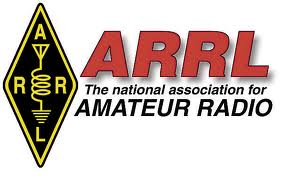Constructing a Full-Wave Loop Antenna for 3.965 MHz
Building your own full-wave loop antenna for 3.965 MHz is a rewarding project that provides excellent performance on the 75-meter amateur radio band. This type of antenna is especially effective for regional NVIS (Near Vertical Incidence Skywave) propagation, making it ideal for nets and ragchewing on frequencies like 3.965 MHz. In this guide, we’ll walk through the design, materials, construction, and installation of a horizontally-polarized full-wave loop.
Understanding the Basics
A full-wave loop antenna is a continuous wire loop that measures one full wavelength of the operating frequency. For 3.965 MHz, the wavelength can be calculated using the formula:
This means the total length of wire required for a full-wave loop is approximately 75.66 meters, or about 248.3 feet.
Choosing the Loop Shape
You can build the loop in a variety of shapes: square, rectangle, triangle, or even a circle. For simplicity and ease of construction, we’ll use a square layout. In this case, each side of the loop will be:
Materials Needed
- ~250 feet of 14 AWG stranded copper wire (preferably insulated)
- 4 non-conductive support poles (30–40 feet high)
- Coaxial cable (RG-8X, RG-213, or similar)
- 4:1 current balun (or a 1:1 if using ladder line)
- Rope and insulators
- Ground anchors or tie-downs
Construction Steps
- Prepare the wire: Measure and cut the wire to 248.3 feet. If you’re using insulated wire, strip the ends to connect to your balun or feedline.
- Erect the supports: Place four poles in a square pattern, each spaced about 62 feet apart. The higher the loop, the better, but 30–40 feet is typical for 75 meters.
- Attach insulators: Tie insulators at the corners of the loop and run rope from each corner to the top of each pole.
- Hang the loop: String the wire through the insulators in a square. Ensure it is taut but not overstressed.
- Connect the feedline: Attach the feedline to the loop at the bottom center of one side. Use a 4:1 current balun at the feedpoint to match impedance (~100–120 ohms) to 50-ohm coax.
- Secure everything: Use rope to secure the structure and ensure the wire doesn’t sag too much.
Tuning and SWR
Once the antenna is installed, check the SWR using an antenna analyzer. You may find the resonant frequency slightly off; adjust the total loop length slightly if needed. Trimming small amounts from the loop can bring the resonance right to 3.965 MHz.
If you plan to operate across the 75m band, a tuner is recommended. A good balun and clean feedpoint connection will minimize losses.
Performance Characteristics
- Radiation Pattern: Horizontally polarized with a high-angle radiation pattern ideal for NVIS.
- Impedance: Around 100–120 ohms; hence the use of a 4:1 balun.
- Bandwidth: Typically broad enough to cover several hundred kHz.
- Gain: 2–3 dB over a dipole at the same height.
Advantages of the Full-Wave Loop
- Low noise compared to dipoles and verticals
- Excellent for local/regional comms (200–500 miles)
- Simple construction with minimal cost
- Performs well even at modest heights
Optional Enhancements
- Use ladder line with a tuner for multiband operation.
- Install a remote tuner at the feedpoint for full band coverage.
- Add a choke balun below the feedpoint to suppress common mode current.
Conclusion
The full-wave loop antenna for 3.965 MHz is an excellent choice for the 75-meter band. Whether you’re checking into your favorite evening net or just chatting with friends, this antenna delivers strong regional coverage with low noise. With a few basic materials and some weekend effort, you’ll be on the air with an efficient and reliable antenna.







